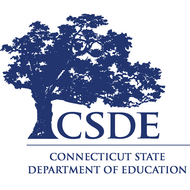Connecticut Model Financial Literacy for Grades 6-8
(View Complete Item Description)Next Gen Personal Finance Grade 6-8 VideoNext Gen Personal Finance DEMO VideoCSDE Model Curricula Quick Start GuideEquitable and Inclusive Curriculum The CSDE believes in providing a set of conditions where learners are repositioned at the center of curricula planning and design. Curricula, from a culturally responsive perspective, require intentional planning for diversity, equity, and inclusion in the development of units and implementation of lessons. It is critical to develop a learning environment that is relevant to and reflective of students’ social, cultural, and linguistic experiences to effectively connect their culturally and community-based knowledge to the class. Begin by connecting what is known about students’ cognitive and interdisciplinary diversity to the learning of the unit. Opposed to starting instructional planning with gaps in students’ knowledge, plan from an asset-based perspective by starting from students’ strengths. In doing so, curricula’s implementation will be grounded in instruction that engages, motivates, and supports the intellectual capacity of all students.Course Description: The Middle School Course is designed to be an engaging, teacher-led curriculum for grades 6 - 8. From money values to credit, taxes to investing, and interview skills to resumes, the interactive NGPF Middle School Course covers all grade level appropriate topics within personal finance in 9 individual units. The course content aligns to the Middle School Jump$tart National Standards. Upon completion of the course, students will have the ability to:Discuss knowledge, skills, interests, and experience required for different types of jobs.Describe the difference between wages, salaries, commissions, and tips.Understand government-provided services are paid for with taxes.Analyze how people differ in values and attitudes about spending.Share examples of how price, spending choices of others, peer pressure, or advertising influence a purchase decision.Explain the similarities between paying for purchases with cash, checks, and debit cards.Compare the effects of using debit versus credit cards to make purchases.Describe the advantages of saving money in an account at a financial institution rather than keeping the money at home.Explain why people invest money.Identify long-term financial goals that are most likely to be achieved by people who regularly invest their money over many years.Discuss reasons people may prefer to buy something with credit rather than paying cash.Investigate the types of insurance commonly available for people to purchase.Aligned Core Resources:Core resources is a local control decision. Ensuring alignment of resources to the standards is critical for success. The CSDE has identified Next Generation Personal Finance as a highly aligned core resounce after a rigorous review process. Additional Course Information: The curriculum is online-based and is best implemented in a classroom where students have 1:1 access to technology. All materials are customizable to help you meet the needs of every student in your classroom. The lessons and activities may be completed in person, remotely, and/or in a hybrid learning environment. The curriculum includes a diagnostic exam and a final exam, as well as one exam per unit for units 2 - 9.ELA/Math Transferable Skills Addressed in the Course: Each Lesson Guide includes a checklist of Math skills (Order of operations, Ratios, Proportions, and Percents, Expressions and Equations, Graphing on a Coordinate Plane, Measures of Central Tendency) and ELA skills (Conduct research to locate information, Write claims with clear reasons and evidence, Understand and summarize key topics from a text or visual, Participate in discussions and state ideas clearly). You will see the checkbox marked at the top of the Lesson Guide for each skill that is addressed in that lesson.
Material Type: Full Course


